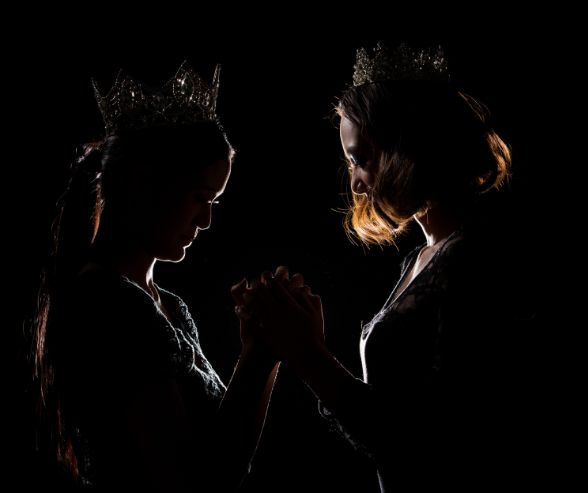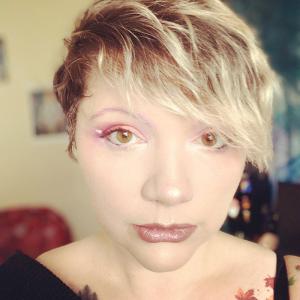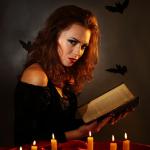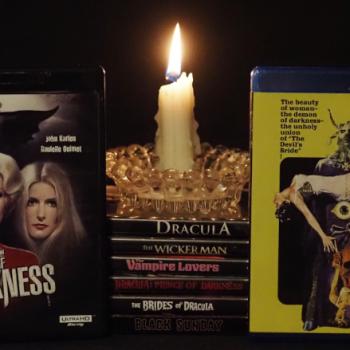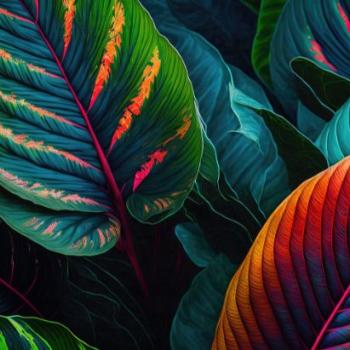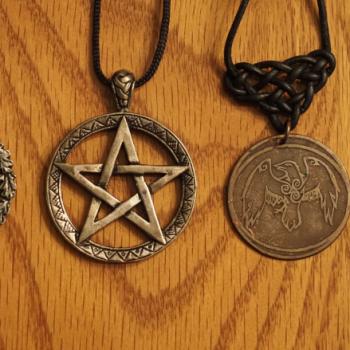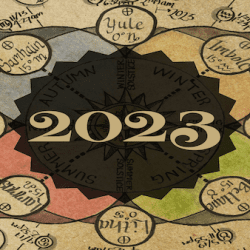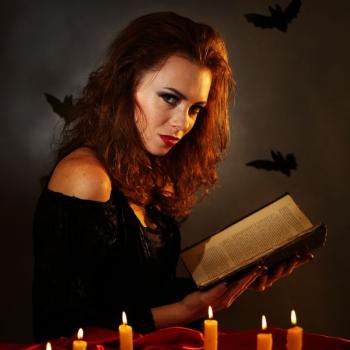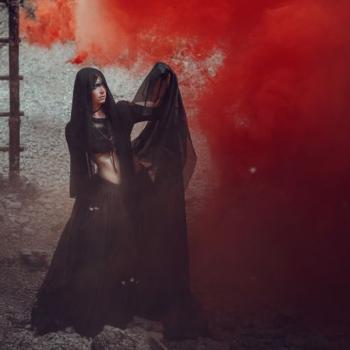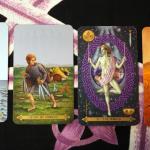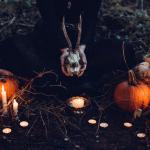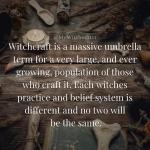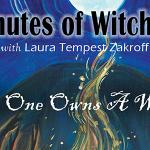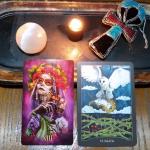image Jadethaicatwalk/gettyimages
The Morrigan and Myth
Mythology is a fascinating subject.
I love stories more than I can express, and when working with a Goddess in your spiritual path it is important to engage with the stories that surround her.
I am not a reconstructionist.
There are others who are, who will give you that particular view point, but instead I am an evolutionist – I believe in both the importance of the mythology, and the evolution of Deity.
Sticking rigidly to scripture leads to spiritual death. It allows no growth – and the Shapeshifting Goddess understands that well in my experience.
We live in a weird age of both misinformation and bite-size social media.
Yesterday I happened upon a video on Tiktok which appeared to be authentic in its retelling of Her mythology… until it wasn’t.
The video claimed that The Morrigan was associated in mythology with a Cauldron of rebirth that kept people alive and brought them back from the dead.
Which is just… wrong.
The cauldron they are describing sounds like the cauldron of Bran the Blessed, whose adventures are detailed in the medieval Welsh texts of the Mabinogion.
Or perhaps they got their wires crossed about the Dagda’s cauldron of abundance.
So I enquired, pointing out that The Morrigan has no mythology about a cauldron.
I was informed that “Cerridwen and The Morrigan are the same Goddess, and that I am an American so I should shut up telling Celtic people their own myths!”
Cerridwen is not the same Goddess as The Morrigan.
I am not an American.
I have Welsh and Irish heritage and was born in the UK.
The video is at over 2,000 views with plenty of people taking it as factual.
Putting aside their need to try to discredit another individual for their DNA for a moment, this is why I think it matters to be true to The Morrigan’s mythology whilst still acknowledging that Goddess evolves and that personal gnosis is valid to the individual.
Why Mythology Matters
The mythology – or roots, if you like, of a Deity is an important part of their story, as well as the beliefs of our ancestors.
Often mythology hides a mystery tradition and it’s teachings for those who strive to discover them – and to disregard the myth entirely – or as in this case, to ignore it or supplant one Goddesses myths for another seems disrespectful and lazy.
It is not to say that you cannot use a cauldron if you follow The Morrigan in your personal practice, nor is it to say that Cauldrons do not have fascinating mythology and folklore which spans different Celtic traditions and folklore.
I love cauldrons and their symbolism!
But the fact remains that The Morrigan has no references to a Cauldron of Rebirth in Her mythology.
Short video format is becoming the norm online, and I have been concerned about it for some time, because it encourages a deficit in attention span, and promotes a dopamine-hit style of engagement which allows for errors to be taken as factual.
I have seen cruelty masking as factual representation as well, however, and I do want to address that.
Bullying and exclusion tactics are foul and as far as I’m concerned have no place in spiritual circles, but they exist far too often.
It’s often used as a gatekeeping tactic to silence other creators, usually as control tactic over money.
To suggest someone has no right to speak based on their genetics is a frankly horrifying trend – one the TikTok creator fell back on to defend a lack of research.
I have seen it employed against those who clearly work with The Morrigan as well, simply because someone wants to silence them.
There is a difference between constructive criticism, correct sourcing of mythological material, and bullying someone into silence.
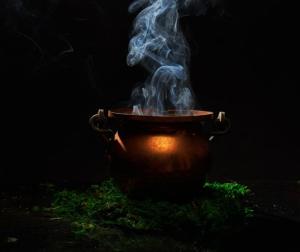
Image Nucleur-lil / Getty images
Personal offerings
There are places where I think these differences are important – the line between personal gnosis in spiritual practice and mythology.
Then there are places where the lines are blurred.
For example, what herbs and offerings are used on a person’s altar to The Morrigan. This is no-one elses’ business and it affects no-one but the practitioner.
Practitioners might want to try and reflect some of the historical offerings of their ancestors.
At Newgrange evidence of votive offerings and coins have been found and in West Cork evidence of food offerings survived.
But much of religious practice has not survived – being biodegradable, lost to the ages, or eradicated by conquering religions.
Lack of historical evidence should not deter a follower of the Goddess from giving offerings.
Teaching misinformation
This is a tricky area because of the nature of spirituality and its teaching.
Paganism is a highly individualised practice, influenced by folklore, mythology, personal discovery and interpretation.
There is a difference between teaching and discussion of spiritual practice. Many online share their practice and experiences, only to have others try to invalidate that.
A person’s individual practice is no-one else’s business unless they’re harming others.
When someone is teaching others, there are differences between teaching folklore and mythology accurately and spiritual practice.
Hopefully, a person teaching spiritual practice is well versed in the mythology and respects it.
But even people who know the mythology down the letter sometimes make terrible teachers when spiritual and academic lines cross.
People will argue about what certain mythology means (or not.)
But at least in those arguments the mythology exists – interpretation as debate is an age-old human tradition.
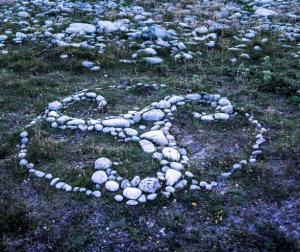
image – Ronan Salou / Getty images
The Morrigan is not Cerridwen
I think this might go without saying, but just because this was claimed as “factual” in the mythology TikTok, I felt the need to address it.
The Morrigan is a Goddess who is recorded primarily in the Irish tradition, Cerridwen from the Welsh tradition.
The Morrigan is documented as a Goddess of War, Cerridwen is not.
Both the Goddesses have references to Druids, Morrigan as “one of the druids of the Tuatha Dé” (Morpheus Ravenna, The Book of the Great Queen p59) and Cerridwen is accepted as the Goddess of the OBOD and mother of the most famous of Druidic Bards, Taliesin (from the Mabinogion.)
Both Goddesses have shapeshifting abilities, but these differ greatly.
Cerridwen’s documented shapeshifting is limited to animals; a greyhound, an otter, a hawk, and a black hen.
There is also suggestion that the black sow in the tale of Taliesin’s madness was Cerridwen.
The Morrigan shapeshifts into a Crow, a blackbird, a Raven, an Eel, a She-Wolf (and other night howlers,) a red heifer, a woman in red, an alluring young woman, a Hag or Crone and the Washer at the Ford.
The Morrigan is a Goddess of Prophecy and sacred Oaths to Her are bound as Geis – if broken they lead to death.
Cerridwen is associated with the Cauldron and the magic of Awen – the cosmic force of inspiration.
Whilst both Goddesses are connected to sorcery, the primary method from the mythology of Cerridwen is of potions and a knowledge of herbs.
The Morrigan engages in battle spells conjuring flame and blood, ritualistic poetry, cursing and binding spells and transformation (such as transforming Odras from a woman into a pool of water.)
The list continues in great detail – but sufficed to say both are Goddesses in their own right and should be respected as such.


